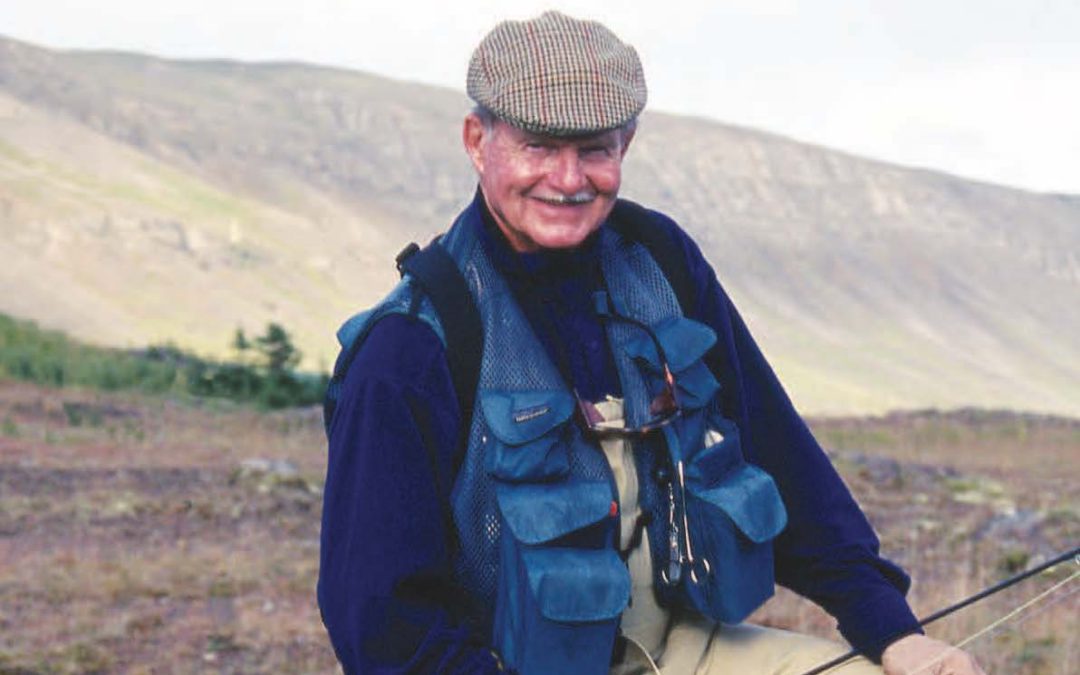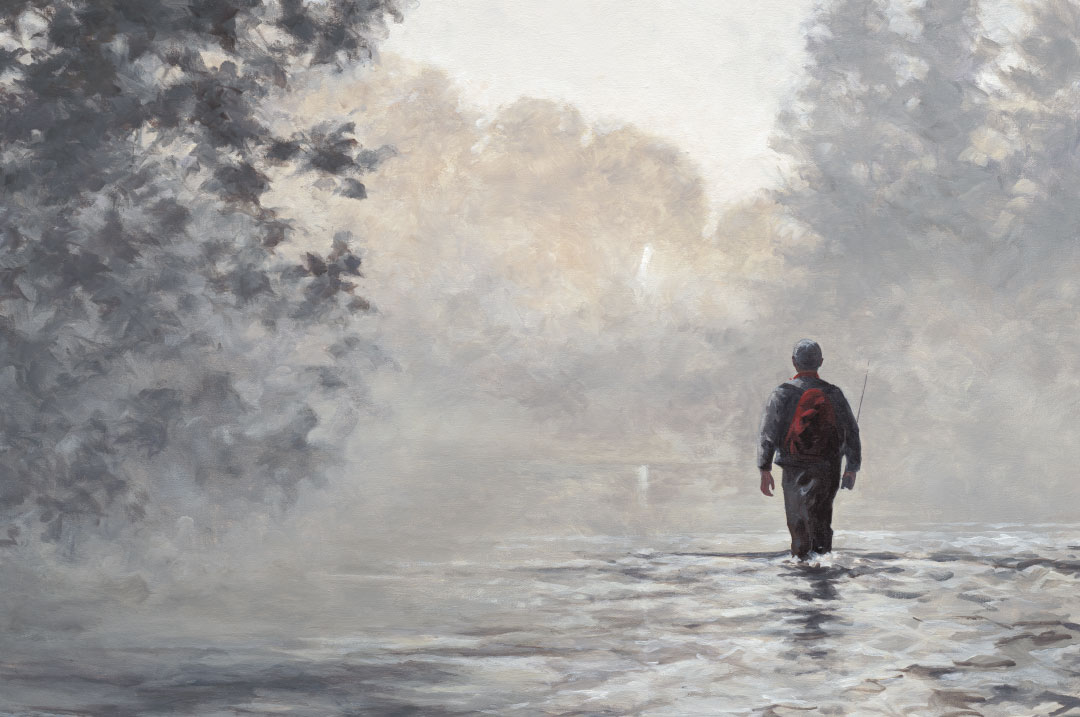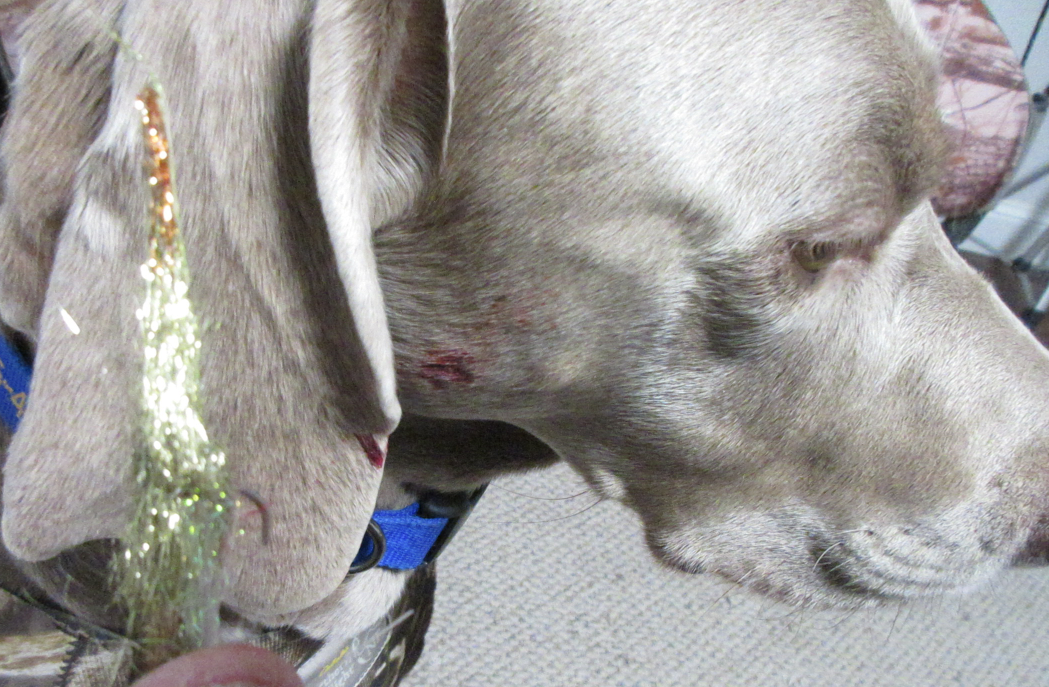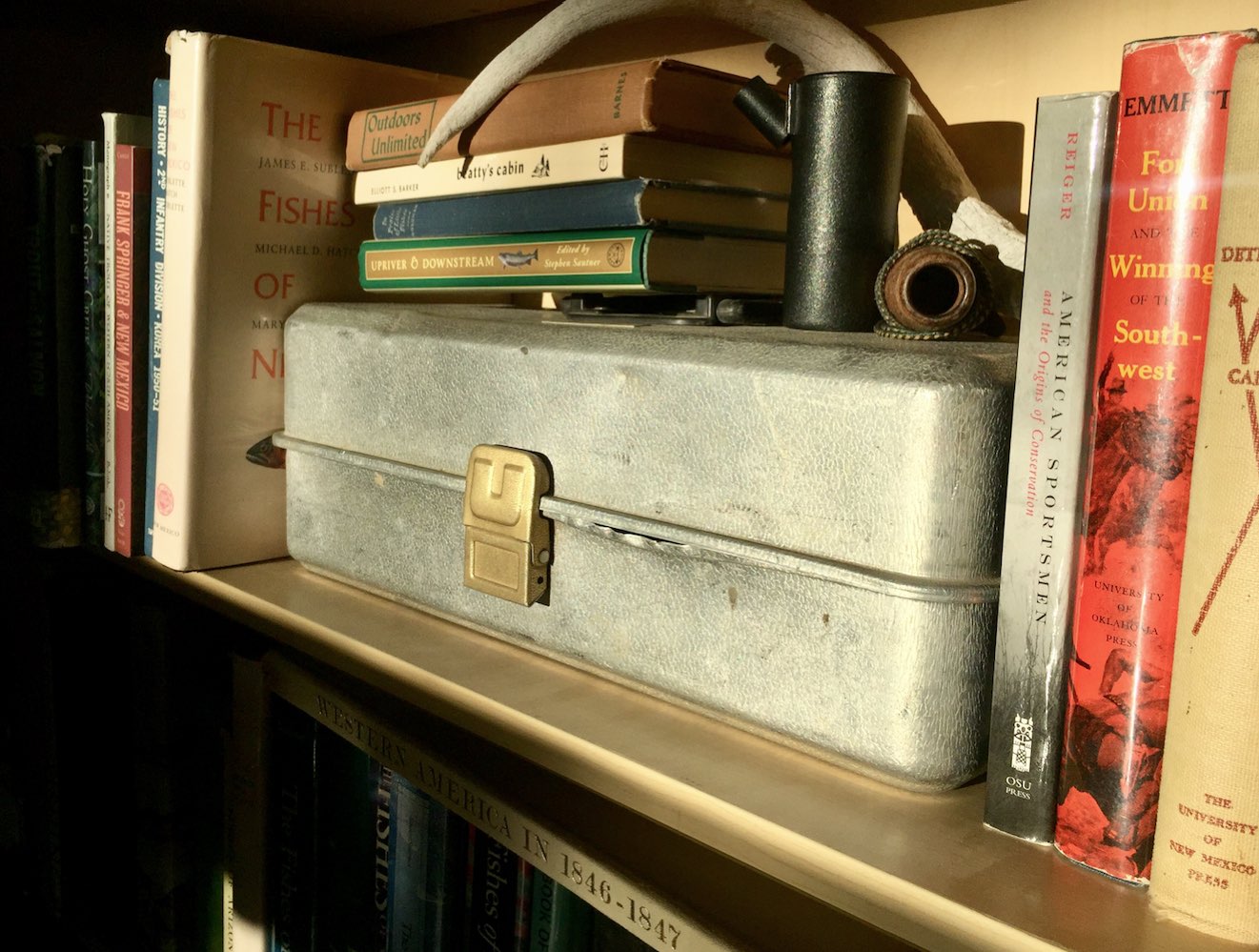A legend in his own right, Ernest’s son, Jack Hemingway, created a name for himself in the world of fly fishing that lives on to this day.
Anyone who was lucky enough to befriend Jack Hemingway during his lifetime—and he frequently fished with some of the world’s most accomplished fly fishermen—will tell you that he was always the last man to throw in the towel as darkness approached after a day on the water. Fly fishing was his passion, and he made it a way of life. He followed that passion to many corners of the globe. Looking back, it’s clear to see that the man who bore a striking resemblance to his father was one of the world’s great ambassadors of the sport.
Being the son of world-famous author and celebrity Ernest Hemingway could not have been easy, but Jack took it in stride. Obviously the privilege opened many doors that would not have been opened otherwise. Jack certainly used this to his advantage.
In his classic autobiography Misadventures of a Fly Fisherman: My Life With and Without Papa, published by Taylor Publishing Co. in 1986, he noted: “I spent the first 50 years of my life being the son of a famous father and am now spending the last 50 as the father of famous children.”
Two of his three daughters, Margaux and Mariel Hemingway, both achieved fame by becoming well-known models and actresses. Sadly, Margaux died in 1996 from a drug overdose. For Jack, that second half-century that he jokingly referred to was cut short in 2000 when at age 77 he died from complications after heart surgery.
As he grew older, Jack Hemingway fell in love with fly fishing and the outdoors in general. Fishing the world eventually became his lifelong avocation.
Even in his 70s Jack Hemingway was a young man at heart. He never lost that boyhood enthusiasm and excitement for people, for nature or for his beloved fly fishing.
John Hadley Nicador Hemingway was born on October 10, 1923 in Toronto, Canada. The name “Nicador” came from a famous matador friend of Jack’s father, Nicador Villanta. The elder Hemingway wanted his son to possess the courage of a bullfighter, and Jack certainly proved that he did many times over during his lifetime.
Jack’s mother was Hadley Richardson, Ernest’s first of four wives. The couple moved to Paris when “Bumby,” the nickname given him by his parents, was an infant. His godmothers were Gertrude Stein and Alice B. Toklas of literary fame. Jack later had two half-brothers, Patrick and Gregory, by Ernest’s second wife Pauline Pfeiffer.
As soon as he was old enough to walk, Jack began accompanying his father on fishing excursions to some of the local rivers and streams around Paris. As he grew older, he fell in love with fly fishing and the outdoors in general. Fishing the world eventually became his lifelong avocation.
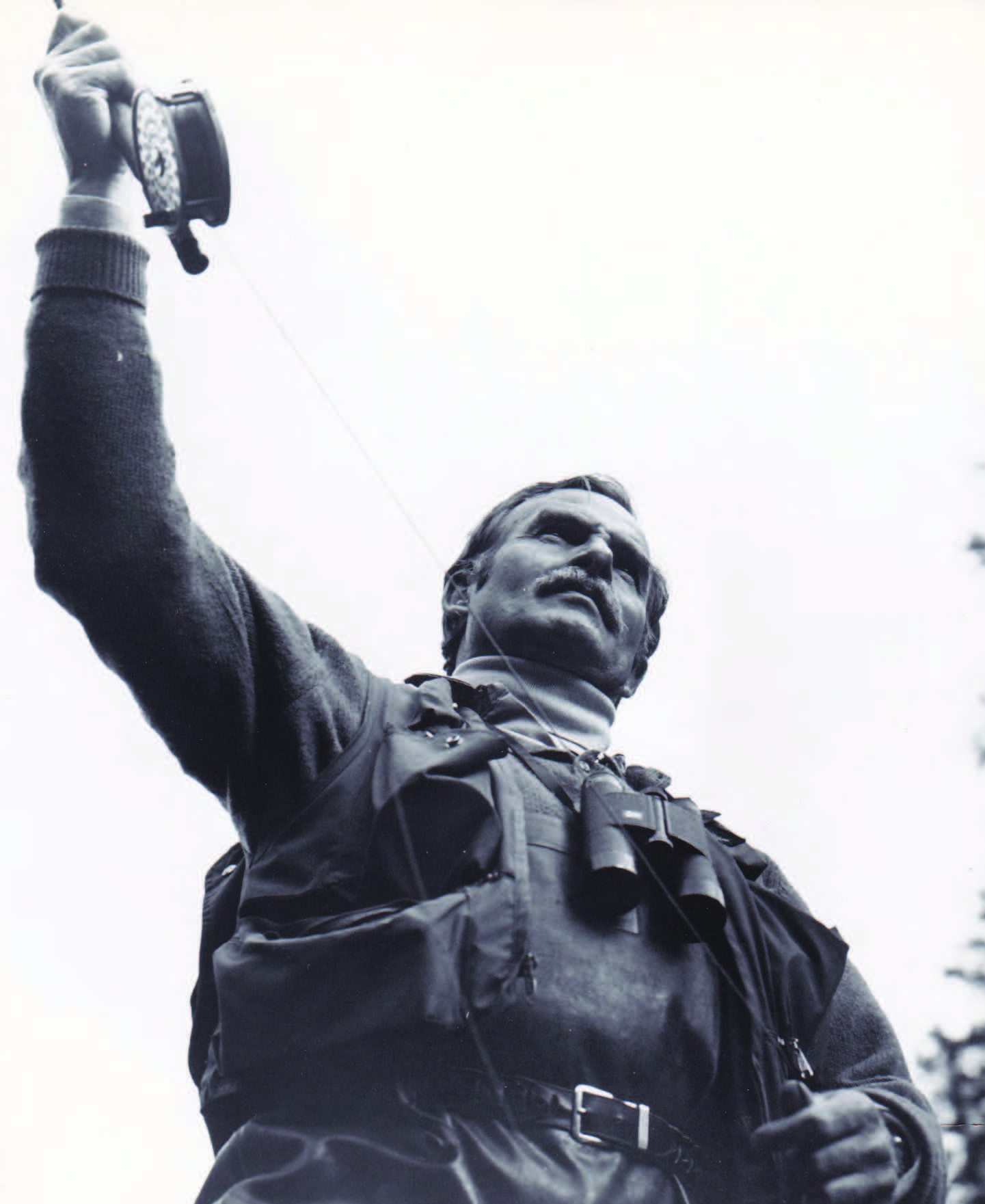
Thanks to his father’s travels, he fished a variety of waters in France, Spain, Cuba, Key West and the American West while growing up and later as a young man. During childhood, while spending summers with his father in Montana and Idaho, he mingled with the likes of Gary Cooper, Clark Gable and Ingrid Bergman.
Jack was 5 when his parents divorced. In later years he spent summer vacations with his father and step brothers. By the time he was a teenager, fly fishing had captured his soul. As he grew older, he spent time with his father in Cuba, Montana and in Sun Valley, Idaho. He enjoyed saltwater fishing with his dad in the Gulf Stream, but fly fishing in the West for trout and salmon became his true passion.
During his time in Montana and Sun Valley, he also inherited a lifelong interest in hunting upland birds and ducks from his father. Elk and deer were plentiful, but he never showed much interest in hunting big game.
In 1941, Jack attended the University of Montana and later transferred to Dartmouth College. After Pearl Harbor, he dropped out of college and enlisted in the U.S. Army. After a short stint in North Africa, he was assigned to the Office of Strategic Services (OSS). Because he spoke fluent French, Captain Jack Hemingway parachuted into France behind enemy lines on a mission to aid the Marquis or Marquisards (French Resistance). As he jumped from the airplane under the cover of darkness, Jack’s most important “survival gear” included a fly rod and reel, and a small assortment of flies.
Jack promptly began fishing some of the streams and rivers behind enemy lines whenever he could slip away from his duties. On one occasion he had no sooner wet a line in a promising roadside stream when a German patrol happened by. With the Resistance insignia in plain sight on the shoulder of his jacket, Jack calmly waved at the passing soldiers as he shielded his arm from their view. He resumed fishing after they had gone.
Fly fishing and the great outdoors were always Jack’s rock.
Jack was on a surveillance mission in November 1944 when he stumbled onto another German patrol. He was shot in the arm and shoulder and taken prisoner. He recovered from his wounds and spent the rest of the war in a POW camp.
After the liberation of Paris in 1945, Jack joined his father in the city of his boyhood to celebrate VE day. Being wounded and captured impressed the elder Hemingway and seemed to help solidify their adult relationship.
Jack stayed in the military after the war. When he eventually decided to leave the Army, the transition to civilian life was not easy. He struggled to make a living and support his growing family. Although he was unquestionably an artist with a fly rod, he spent years as a “starving artist” in the business world. He had a brief career as a stockbroker and then as a salesman of fishing supplies. He even tried selling his own hand-tied flies. Even though it was something he greatly enjoyed, he quickly found that such a labor-intensive occupation could never quite pay the bills.
Jack married Byra L. “Puck” Whittelsey in Paris in 1949. After nearly 40 years together, she died of cancer in 1988. The couple had three daughters: Joan, born in 1950, Margot (later changed to Margaux) born in 1954 and Mariel born in 1961.
Fly fishing and the great outdoors were always Jack’s rock. After the death of his father in 1961, worldwide sales of Ernest Hemingway books picked up dramatically. Jack and his two brothers shared in the royalties. Jack moved to Ketchum, Idaho, where, on his father’s original property, he began to devote most of his time to fly fishing for trout and salmon. During the 1970s, ’80s and ’90s, he traveled to some of the world’s top fly fishing destinations and championed a number of important conservation issues. Wherever Jack went, he was hailed as a celebrity. With his genuine easy-going and gregarious personality, he made numerous friends.
Terry Ring of Silver Creek Outfitters in Ketchum, Idaho, is a renowned fly fisherman in his own right. He first met Jack during his high school days in the 1970s. Jack became a fishing mentor and lifelong friend. Later on, after Terry established Silver Creek Outfitters, he saw Jack frequently.
“Jack would come into the shop every day when he was in town,” Terry said. “He was one of my best customers. He was the most enthusiastic fly fisherman I’ve ever known, and he was a pleasure to be around. Whenever we fished together, it was always, ‘One more cast, one more cast,’ sometimes well into darkness. He never wanted to stop.
“Jack was a big, vibrant guy who had a booming laugh. He was fun, entertaining and he had the enthusiasm of a kid. He was the easiest man in the world to get along with because social status meant nothing to him. He would light up a room with his infectious smile and booming laugh. When he entered a room, he had a presence because of his smiling eyes and his booming voice.”
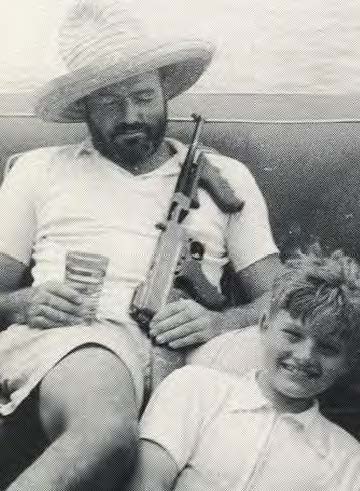
Young Jack was introduced to guns at an early age. Here he sits with Papa aboard the Pilar, on which Ernest carried a machine-gun to kill sharks while keeping a sharp eye out for enemy submarines.
Virtually all of Jack’s friends and fishing buddies described him in a similar manner. In 1987, Terry traveled to Chile with Jack and several other friends for a month of fly fishing. Terry later went to Russia with Jack and fished for salmon, one of Jack’s great loves.
“I am introducing you to a life of nature, fishing and shooting. We’ll go all over the world and meet wonderful people and share experiences on what I hope will be an unforgettable journey.”
During the 1970s and ’80s, Jack took a stab at writing about fly fishing for a number of outdoor publications including Field & Stream. His first book, Misadventures of a Fly Fisherman: My Life With and Without Papa, is a compelling account of his fascinating life. If a passion for living life to its fullest and fly fishing on a world-wide level counts for anything, the book is a much underrated classic. It also contains considerable insight into Jack’s life with his world-famous father.
Jack’s second book, A Life Worth Living: The Adventures of a Passionate Sportsman, published posthumously by Lyons Press in 2002, would be his final book about his fishing life. Jack dedicated the book to his second wife, the former Angela Holvey, whom he married in 1989, and with whom he spent 12 adventure-filled years of fishing the world before his untimely death in 2000.
The book repeats some of the stories found in his first book, but it also contains a fresh assortment of new and well-written material. In the book’s foreword, Angela Hemingway noted: “Jack approached life like he approached his friendships…with unbridled curiosity, a profound sense of humor and a surprisingly quiet grace…he touched everyone he met, drawing them slowly into the warm embrace of his friendship like a cork drawn from a fine bottle of wine.”
In his marriage proposal to Angela, Jack said, “I am introducing you to a life of nature, fishing and shooting. We’ll go all over the world and meet wonderful people and share experiences on what I hope will be an unforgettable journey.”
“And that’s what we did!” Angela said. “Jack and I met about a year after his wife had died. We were married in 1989, and it really was a fairy tale story. We had a fabulous marriage.”
Having fished most of the great streams in the U.S., Jack spent a fast-paced week with Mark Lovell of Golden Trout Fly Fishing during the fall of 2000. Mark owns a picturesque 750-acre farm in North Georgia’s Habersham County that boasts 3 1/2 miles of frontage on the Soque River. One of North Georgia’s true treasures, the Soque is legendary as a world-class trout stream.
“Jack was fishing with Martin Kline, one of our long-time clients,” Mark remembered. “They had traveled together on a number of fishing adventures. They fished with us for a solid week and Jack loved every minute of it. They fished from sunup to sundown, and each day we took sandwiches to them out on the river. During those casual lunch breaks, we enjoyed some memorable conversations.
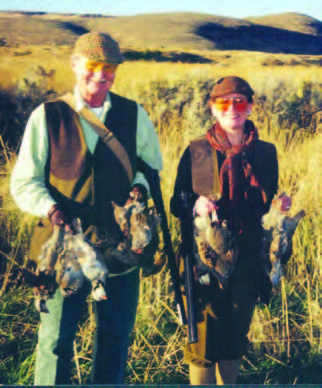
Jack and his wife, Angela, on a prairie bird hunt in Idaho.
“Being a purist at heart, Jack used a mixture of dry flies, but he was also very versatile. We only had about thirty minutes each day for productive dry-fly fishing, and he had come to catch fish. He caught quite a few nice ones, too—several rainbows and browns in the eight- to ten-pound range and numerous fish that weighed six to eight pounds. He said the Soque reminded him so much of river he had fished in his youth somewhere in Europe and it apparently brought back some great memories. It made me feel good to know that it meant so much to him.
“You never would have known he was 77. He acted and looked like a much younger man. He was happy because the fishing was so good. Typically, we enjoyed several late-night drinking sessions. Those memories of listening to Jack tell his wonderful stories will be with me always. I’ll never forget his warm smile and that contagious laugh.”
Perhaps it was fitting that the fishing was so good because it was one of Jack’s last trips. He was so captivated by the splendor of the Soque that he planned to return in 2001. In fact, by October 2000, Jack already had a full schedule of international fishing trips booked for the following spring and fall. Fate had other plans.
While Jack Hemingway certainly inherited his dad’s passion for bird shooting, fly fishing for the elusive trout along Silver Creek cemented his lifelong passion for the sport.
Two months after his memorable trip to North Georgia, Jack checked into Weill Cornell Medical Center in New York City to undergo what was thought to be a relatively routine heart procedure. After the surgery he suffered complications. He died on December 1, 2000.
According to his good friend Terry Ring, “Jack was very anxious to get that ‘little heart problem’ taken care of so that he would be in shape to travel by the spring of 2001.”
Ernest Hemingway was a diehard saltwater fisherman at heart. During his frequent fall trips to Sun Valley Ranch, he enjoyed fly fishing, but he much preferred to be gunning for upland birds. While Jack certainly inherited his dad’s passion for bird shooting, fly fishing for the elusive trout along Silver Creek cemented his lifelong passion for the sport. The stream was known for having one of the highest densities of aquatic insects anywhere, and Jack spent many a happy hour chasing the elusive trout that fed on those numberless insects.
Jack proudly served a seven-year term as a commissioner on the Idaho Fish and Game Commission from 1971 to 1977. During that time, he was instrumental in having the state of Idaho develop a “catch and release” program for trout. The program proved very beneficial for the trout fishery in Idaho, and other western states eventually instituted similar programs. Jack was also instrumental in eliminating hatchery trout from top Idaho streams where natural reproduction occurred.
In 1975, Sun Valley Ranch, which included a prime stretch of Silver Creek, came up for sale. Knowing firsthand what a natural treasure this high-desert, spring-fed creek was, and knowing that it would only be a matter of time before the land was developed into homesites, Jack contacted the Nature Conservancy and encouraged the organization to purchase the 479-acre ranch. Completed in 1976, the transaction was the Nature Conservancy’s first project in Idaho. The Silver Creek Preserve has since grown to include some 851 acres as well as conservation easements from adjacent landowners for another 12,600 acres.
Today, Silver Creek is a world-class trout stream. In addition to the scenic splendor, visitors can observe elk and deer, flocks of waterfowl and swarms of hatching mayflies. In 1999, Jack asserted that the fishing in Silver Creek was better in the late 1990s than it had been when he first began fishing the stream as a boy.
Shortly before his death, Jack was very excited about the prospects for his upcoming book. He wanted it to be titled A Life Worth Living: The Adventures of a Passionate Sportsman. Like his first book, the title had special meaning. Jack’s entire life had always revolved around being the son of a world-famous writer, but he desperately wanted to be his own man.
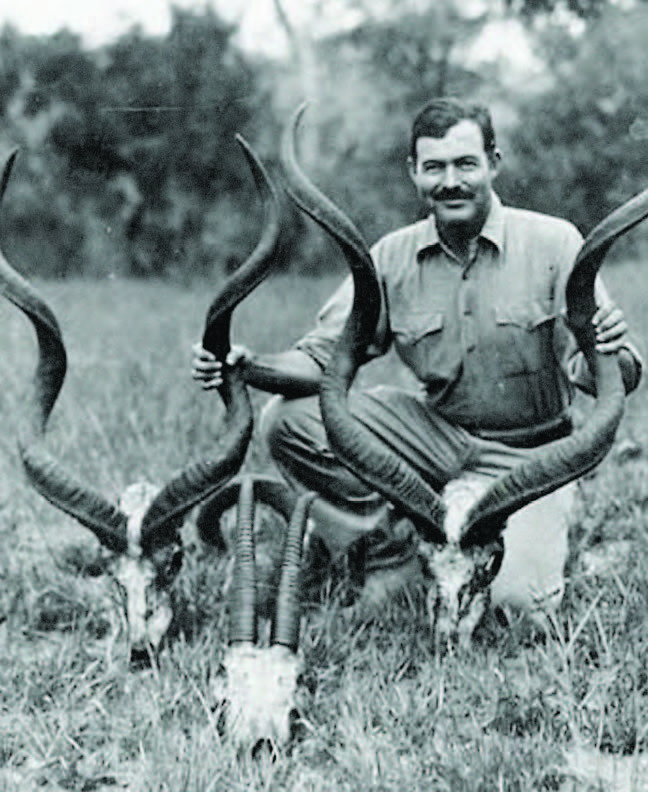
Ernest Hemingway with kudu trophies on one of his early African safaris.
When we read about his life, we find that he achieved that goal with resounding success. Perhaps there is a little bit of Jack Hemingway in each of us who answers to the call of the great outdoors. Try as we might, though, few of us will ever have the time or the means to do it as long and as well as he did. Jack Hemingway was an American fly fishing original!
Noted author and fly fishing expert Tom McGuane, who wrote The Longest Silence, A Life of Fishing, knew Jack and fished with him on a number of occasions.
In describing A Life Worth Living, McGuane said, “In all the important ways, Jack Hemingway led a blameless life fueled by a singular love for all the days that came his way. His book is informed by the high spirits and cheer of an old-time sportsman, a generous soul whose servings of adversity would have crushed less ebullient spirits. In this book, he is with us still and those of us who knew him will go on hearing that thousand yard laugh as he marched to his rivers.”
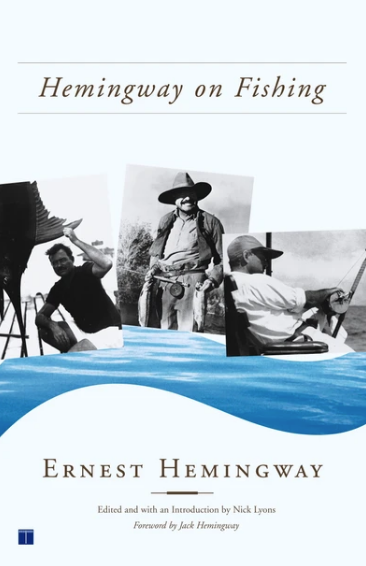 Hemingway on Fishing is an encompassing, diverse and fascinating assemblage. From the early Nick Adams stories and the memorable chapters on fishing the Irati River in The Sun Also Rises to such late novels as Islands in the Stream, this collection traces the evolution of a great writer’s passion, the range of his interests and the sure use he made of fishing, transforming it into the stuff of great literature.
Hemingway on Fishing is an encompassing, diverse and fascinating assemblage. From the early Nick Adams stories and the memorable chapters on fishing the Irati River in The Sun Also Rises to such late novels as Islands in the Stream, this collection traces the evolution of a great writer’s passion, the range of his interests and the sure use he made of fishing, transforming it into the stuff of great literature.
From childhood on, Ernest Hemingway was a passionate fisherman. He fished the lakes and creeks near the family’s summer home at Walloon Lake, Michigan, and his first stories and pieces of journalism were often about his favorite sport. Here, collected for the first time in one volume, are all of his great writings about the many kinds of fishing he did—from angling for trout in the rivers of northern Michigan to fishing for marlin in the Gulf Stream. Shop Now

